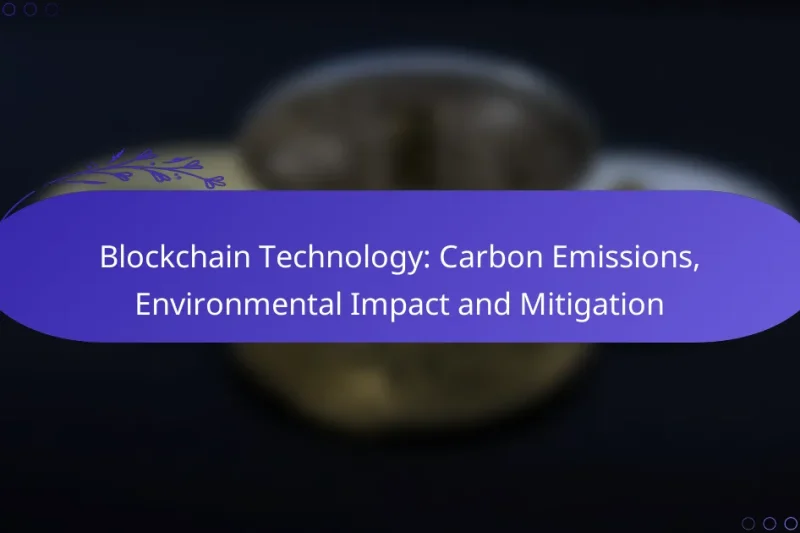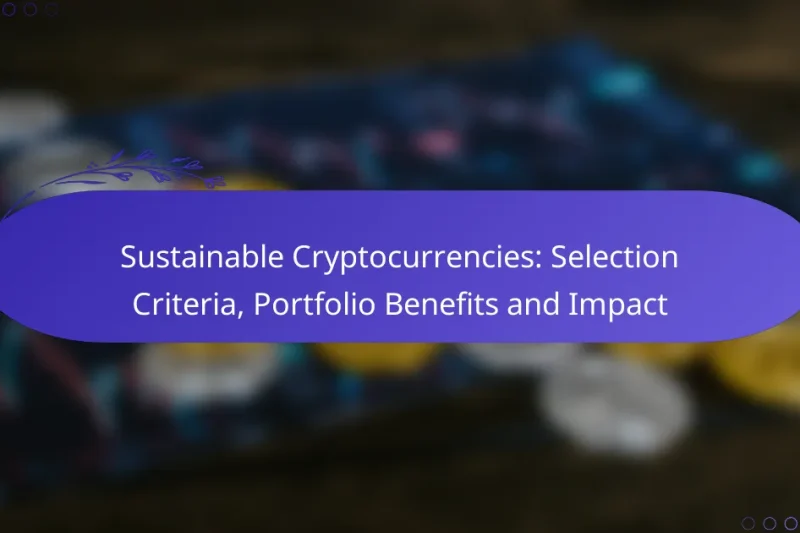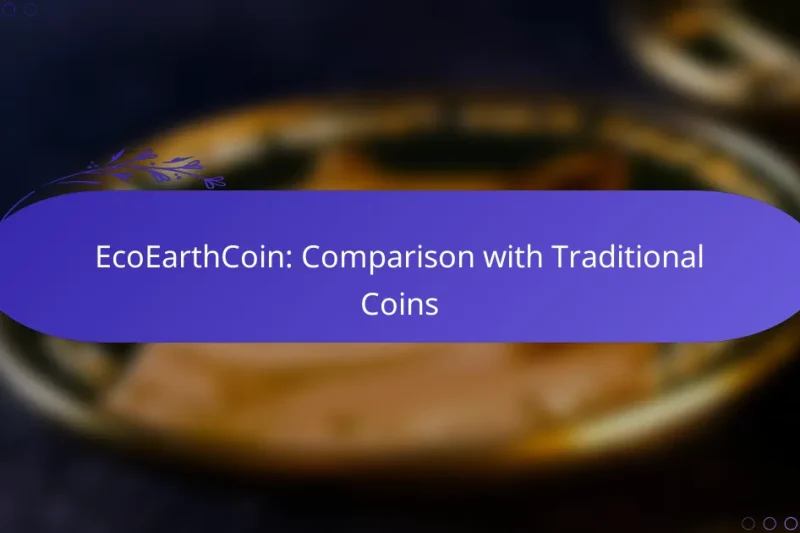Blockchain technology has a dual impact on the environment, significantly influencing carbon emissions through its energy-intensive … Blockchain Technology: Carbon Emissions, Environmental Impact and MitigationRead more
EcoEarthCoin: Environmental Impact of Digital Currencies
EcoEarthCoin represents a groundbreaking approach to digital currency by prioritizing environmental sustainability. Through innovative strategies that reduce carbon emissions and energy consumption, it aims to create a more eco-friendly financial system. By promoting renewable energy and funding environmental initiatives, EcoEarthCoin not only mitigates the ecological impact of traditional currencies but also fosters a greener economy.
Sustainable Cryptocurrencies: Selection Criteria, Portfolio Benefits and Impact
Sustainable cryptocurrencies are gaining traction as investors seek options that minimize environmental impact while maintaining technological … Sustainable Cryptocurrencies: Selection Criteria, Portfolio Benefits and ImpactRead more
EcoEarthCoin: Comparison with Traditional Coins
EcoEarthCoin represents a new approach to currency, emphasizing environmental sustainability and financial inclusion while offering lower … EcoEarthCoin: Comparison with Traditional CoinsRead more
How does EcoEarthCoin reduce environmental impact?
EcoEarthCoin reduces environmental impact primarily through sustainable practices that minimize carbon emissions and energy consumption. By implementing innovative strategies, it aims to create a digital currency that supports ecological balance.
Carbon offset initiatives
EcoEarthCoin actively engages in carbon offset initiatives to counterbalance its environmental footprint. This includes investing in reforestation projects and renewable energy sources that absorb or prevent greenhouse gas emissions. For instance, for every transaction made, a portion of the fees is allocated to these initiatives.
These efforts not only help neutralize carbon emissions but also promote biodiversity and sustainable land use. Users can track the impact of their contributions through transparent reporting mechanisms.
Energy-efficient mining practices
EcoEarthCoin employs energy-efficient mining practices that significantly reduce electricity consumption compared to traditional cryptocurrencies. By utilizing advanced algorithms and low-energy hardware, it minimizes the environmental strain typically associated with mining operations.
Additionally, EcoEarthCoin encourages the use of renewable energy sources, such as solar and wind, for mining activities. This shift not only lowers operational costs but also aligns with global sustainability goals.
Partnerships with green organizations
EcoEarthCoin has established partnerships with various green organizations to amplify its environmental impact. Collaborating with NGOs and environmental groups allows for the sharing of resources and expertise in sustainability practices.
These partnerships often lead to joint initiatives, such as community clean-up events and educational programs about the importance of eco-friendly technologies. Through these collaborations, EcoEarthCoin fosters a culture of environmental responsibility among its users and the broader community.
What are the benefits of EcoEarthCoin for sustainability?
EcoEarthCoin offers several advantages for sustainability, primarily by promoting renewable energy, funding environmental projects, and encouraging eco-friendly practices. These benefits collectively contribute to a greener economy and help mitigate the environmental impact of traditional currencies.
Promotion of renewable energy
EcoEarthCoin supports the use of renewable energy sources by incentivizing miners and users to utilize green energy. This can include solar, wind, or hydroelectric power, which significantly reduces carbon emissions compared to fossil fuels.
By prioritizing renewable energy, EcoEarthCoin helps create a market for clean energy technologies, driving innovation and investment in sustainable energy solutions. This shift not only benefits the environment but also supports energy independence and job creation in the green sector.
Funding for environmental projects
EcoEarthCoin can facilitate funding for various environmental initiatives, such as reforestation, wildlife conservation, and pollution cleanup. Through partnerships with non-profit organizations, a portion of transaction fees can be allocated directly to these projects.
This funding model allows users to contribute to environmental causes simply by participating in the EcoEarthCoin ecosystem. It creates a sense of community and shared responsibility among users, enhancing the overall impact on sustainability.
Encouragement of eco-friendly practices
EcoEarthCoin promotes eco-friendly practices by rewarding users for sustainable behaviors, such as recycling or reducing waste. Users can earn tokens for participating in green initiatives, which can then be spent within the EcoEarthCoin network.
Additionally, businesses that accept EcoEarthCoin may adopt more sustainable practices to appeal to environmentally conscious consumers. This creates a ripple effect, encouraging more companies to consider their environmental footprint and implement greener operations.
How does EcoEarthCoin compare to traditional currencies?
EcoEarthCoin offers a more environmentally friendly alternative to traditional currencies by significantly reducing carbon emissions and resource consumption associated with transactions. Unlike conventional currencies that rely on energy-intensive mining processes, EcoEarthCoin utilizes sustainable practices to minimize its ecological footprint.
Lower carbon footprint
EcoEarthCoin’s design prioritizes energy efficiency, resulting in a substantially lower carbon footprint compared to traditional cryptocurrencies like Bitcoin. While Bitcoin mining can consume as much energy as some small countries, EcoEarthCoin leverages renewable energy sources, aiming for a carbon-neutral operation.
This shift not only helps combat climate change but also aligns with global sustainability goals. Users can contribute to a greener economy simply by choosing EcoEarthCoin over more energy-intensive options.
Reduced resource consumption
Traditional currencies often require significant physical resources for production and maintenance, including paper, ink, and metals. In contrast, EcoEarthCoin minimizes resource consumption by operating entirely in a digital format, eliminating the need for physical materials.
Moreover, the blockchain technology behind EcoEarthCoin is designed to be less resource-intensive, utilizing efficient algorithms that require fewer computational resources. This approach not only conserves materials but also reduces electronic waste associated with outdated mining hardware.
Enhanced transparency in transactions
EcoEarthCoin promotes enhanced transparency through its blockchain technology, which allows all transactions to be publicly recorded and easily verifiable. This level of transparency helps reduce fraud and increases trust among users, as they can independently verify transaction histories.
Additionally, this openness can lead to better regulatory compliance, as authorities can monitor transactions for illicit activities more effectively. Users can feel confident that their transactions are secure and traceable, contributing to a more accountable financial ecosystem.
What are the challenges faced by EcoEarthCoin?
EcoEarthCoin faces several significant challenges that impact its adoption and effectiveness as an environmentally friendly digital currency. Key issues include regulatory hurdles, market volatility, and public perception problems that can hinder its growth and acceptance.
Regulatory hurdles
Regulatory hurdles pose a major challenge for EcoEarthCoin, as governments worldwide are still developing frameworks for cryptocurrencies. Compliance with existing financial regulations can be complex, requiring EcoEarthCoin to navigate various laws that differ by country.
For instance, in the European Union, the Markets in Crypto-Assets (MiCA) regulation aims to create a unified approach to digital currencies, which could affect how EcoEarthCoin operates. Adapting to these regulations while maintaining its environmental focus is crucial for its success.
Market volatility
Market volatility is another significant challenge for EcoEarthCoin, as the value of cryptocurrencies can fluctuate dramatically. This unpredictability can deter potential users and investors who seek stability in their financial transactions.
For example, EcoEarthCoin’s value may experience swings of 10-20% within a short period, making it difficult for businesses to price goods and services consistently. Strategies to mitigate this volatility, such as [censured] to stable assets or implementing hedging techniques, could enhance its appeal.
Public perception issues
Public perception issues can greatly affect the adoption of EcoEarthCoin. Many individuals still associate cryptocurrencies with illegal activities or environmental harm due to the energy-intensive nature of some mining processes.
To counteract these negative perceptions, EcoEarthCoin must effectively communicate its commitment to sustainability and transparency. Engaging in community outreach and educational campaigns can help shift public opinion and promote the benefits of using a green digital currency.
What frameworks support EcoEarthCoin’s environmental goals?
EcoEarthCoin’s environmental goals are supported by various frameworks that emphasize sustainability and responsible practices in the digital currency space. These frameworks guide the development and implementation of EcoEarthCoin to minimize its ecological footprint while promoting green initiatives.
Blockchain sustainability standards
Blockchain sustainability standards are essential for ensuring that digital currencies like EcoEarthCoin operate within environmentally friendly parameters. These standards often include energy efficiency benchmarks, carbon footprint assessments, and guidelines for renewable energy use in mining operations.
For example, adhering to standards such as the Global Blockchain Business Council’s guidelines can help EcoEarthCoin align its operations with best practices in sustainability. This may involve using energy-efficient consensus mechanisms like proof-of-stake instead of energy-intensive proof-of-work systems.
Environmental impact assessments
Environmental impact assessments (EIAs) are critical for evaluating the potential ecological effects of EcoEarthCoin’s operations. These assessments analyze factors such as energy consumption, waste generation, and resource depletion associated with the currency’s lifecycle.
Conducting regular EIAs allows EcoEarthCoin to identify areas for improvement and implement strategies to mitigate negative impacts. For instance, if an assessment reveals high energy use, the project can explore partnerships with renewable energy providers to offset its carbon emissions.
What future trends are emerging in eco-friendly digital currencies?
Emerging trends in eco-friendly digital currencies focus on reducing environmental impact through innovative technologies and sustainable practices. These trends include the adoption of proof-of-stake mechanisms, carbon offset initiatives, and energy-efficient mining processes.
Proof-of-Stake Mechanisms
Proof-of-stake (PoS) is gaining traction as a more sustainable alternative to traditional proof-of-work systems. PoS significantly reduces energy consumption by allowing validators to create new blocks based on the number of coins they hold and are willing to “stake” as collateral. This method can lead to energy savings of up to 99% compared to conventional mining.
For example, Ethereum’s transition to PoS has set a precedent for other cryptocurrencies, demonstrating how shifting consensus mechanisms can minimize carbon footprints. As more projects adopt PoS, the overall environmental impact of digital currencies is expected to decrease.
Carbon Offset Initiatives
Carbon offset initiatives are becoming increasingly popular among digital currency projects aiming to neutralize their environmental impact. Many cryptocurrencies are partnering with organizations that focus on reforestation and renewable energy projects to offset their carbon emissions. This approach not only helps the environment but also enhances the credibility of these currencies.
For instance, some platforms allow users to purchase carbon credits directly through their transactions, effectively linking digital currency use with environmental responsibility. This trend encourages users to consider the ecological implications of their investments.
Energy-Efficient Mining Processes
Energy-efficient mining processes are crucial for reducing the carbon footprint of digital currencies. Innovations such as using renewable energy sources, like solar and wind, for mining operations are becoming more common. This shift not only lowers operational costs but also aligns with global sustainability goals.
Cryptocurrency miners are increasingly seeking locations with abundant renewable energy to power their operations. Regions with favorable conditions, such as Iceland or parts of Canada, are becoming hotspots for eco-friendly mining due to their access to clean energy sources.


